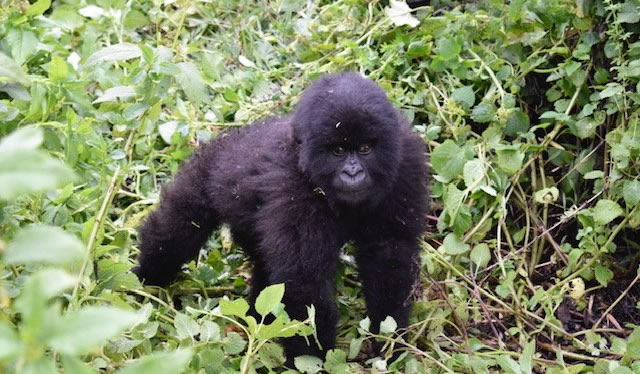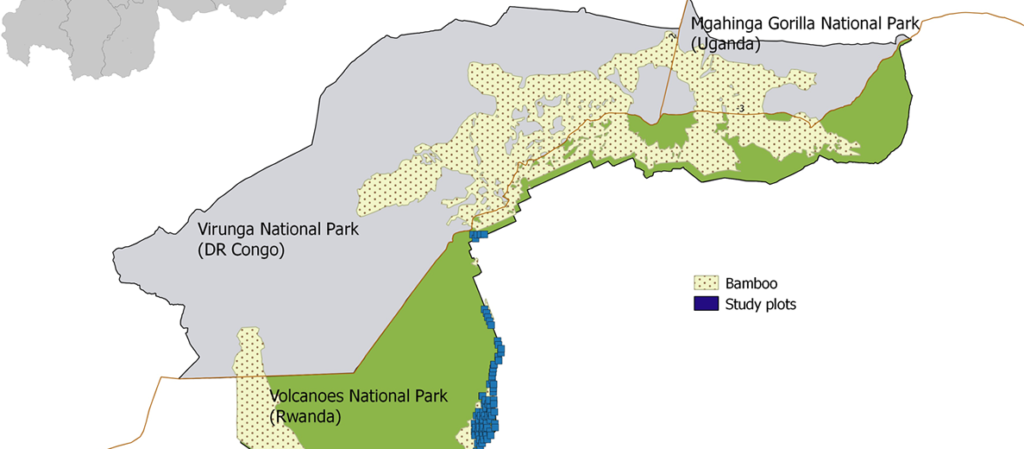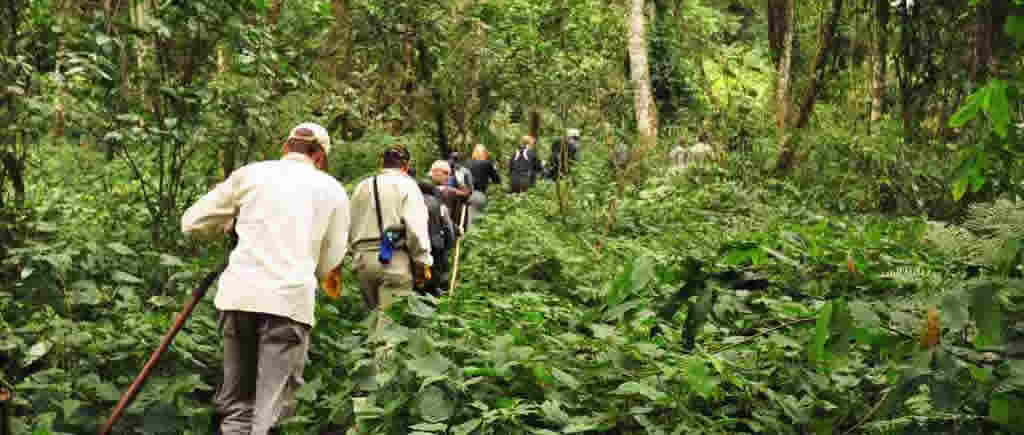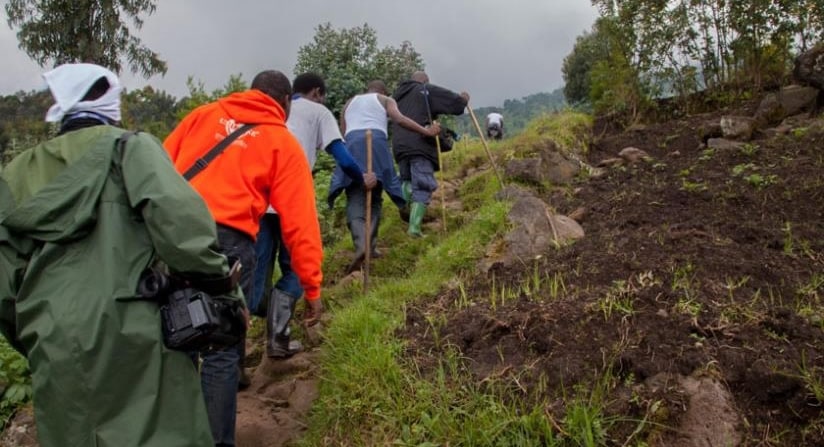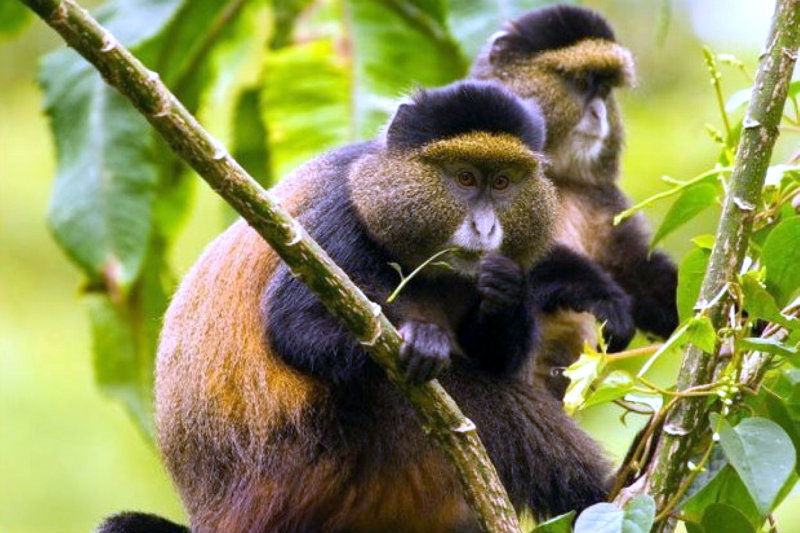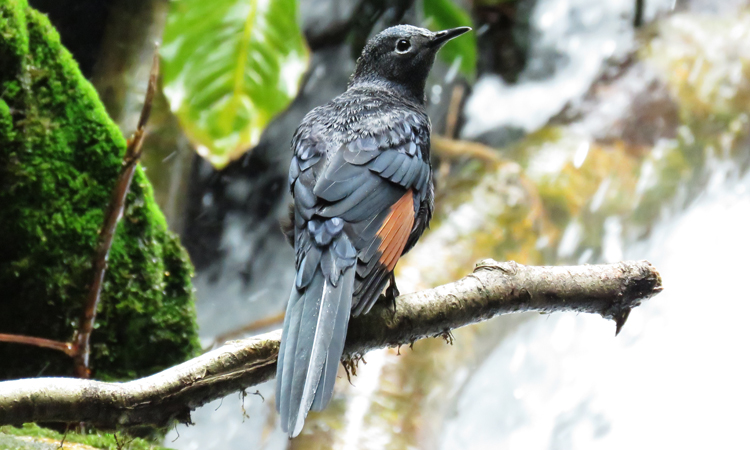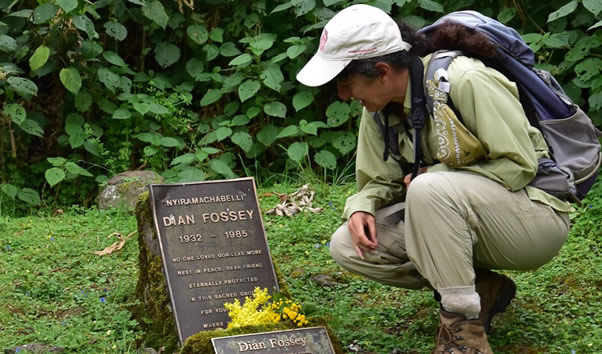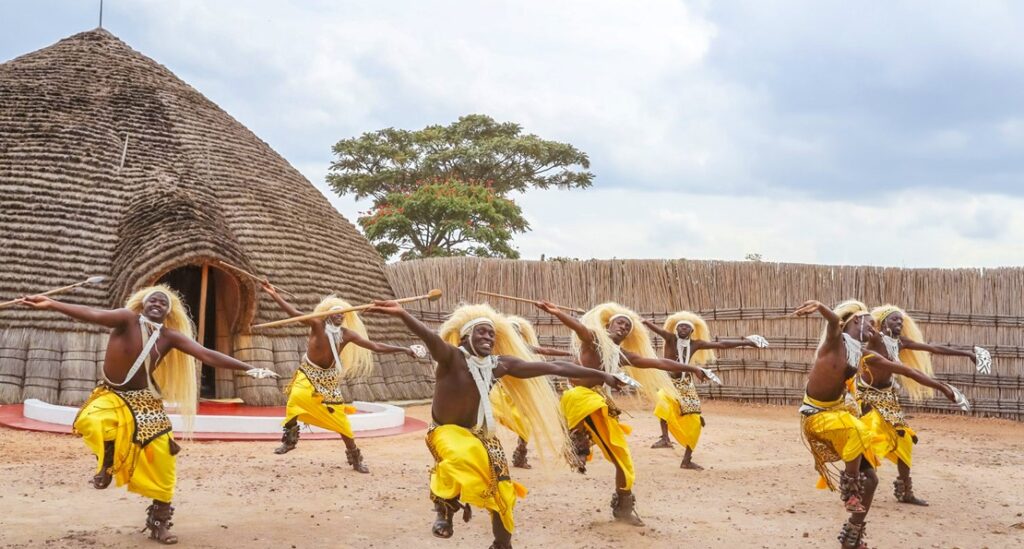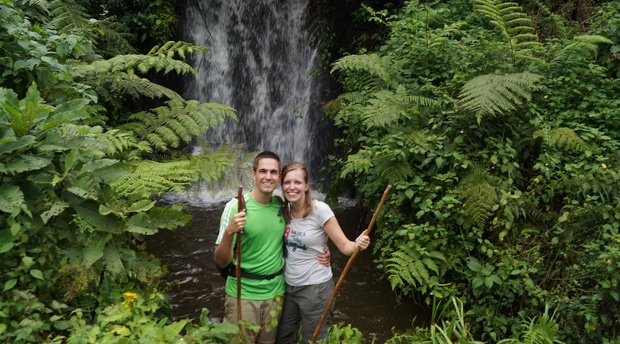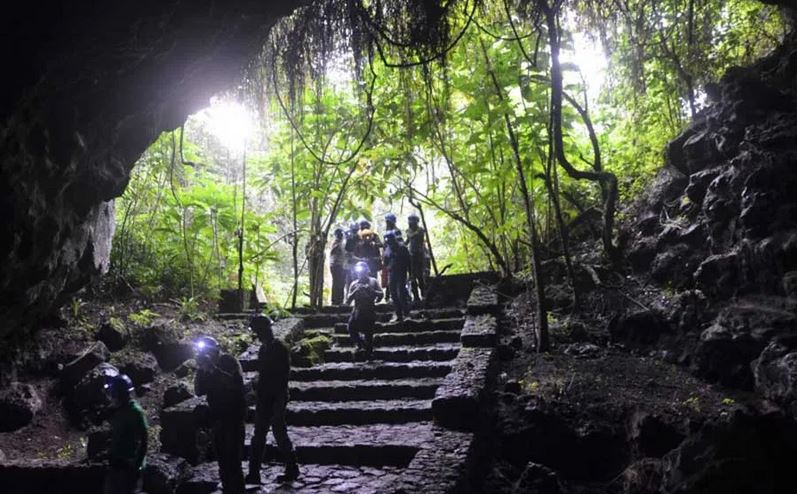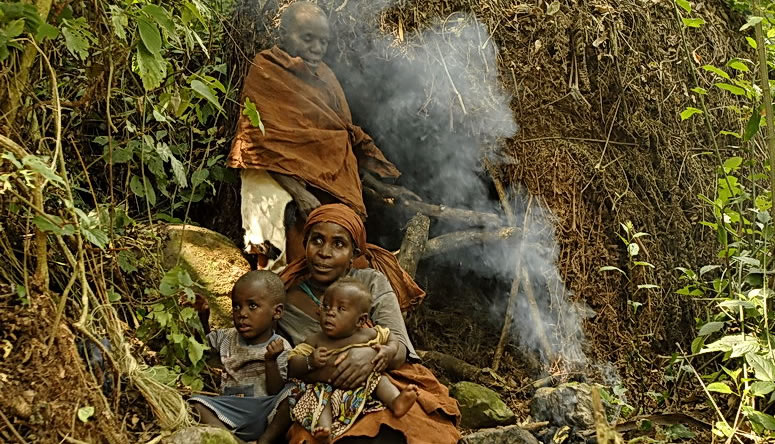Gorilla trekking is the major travel activity done in Virunga Conservation Area. The Massif shelters half of the world’s mountain gorilla population split into three parks. The other population of gorillas lives in Uganda’s Bwindi Impenetrable Forest National park. Safaris to the gorillas attract a high number of travelers from all over the world. An encounter with the endangered gorillas generates a magical feeling which has been reviewed as the best wildlife experience in the whole world.
Best places to visit for gorilla trekking
There are many places where gorillas exist in Africa, but none beats gorilla trekking experiences in Uganda, Rwanda, and Congo. The three African countries host the world’s remaining 1063 mountain gorillas with premier parks to visit including Volcanoes National Park (Rwanda), Bwindi Impenetrable National Park & Mgahinga Gorilla National Park (Uganda), Virunga National Park (DRC). Visiting each of these countries for gorilla trekking rewards nature lovers with distinct experiences.
When choosing the gorilla trekking location, the following factors play a key role; the drive time from the city center, the number of habituated gorilla groups, safety, availability of accommodation, and others. This is in addition to the price of gorilla permits.
Trekking Rwanda gorillas
 Gorilla trekking in Rwanda guarantees an ultimate gorilla encounter, a perfect destination for tourists who prefer luxury gorilla safaris. This is a typical example of a high-end African safari destination. 12 gorilla families are all available for tracking in Rwanda alone, and there is only one location to set foot to search for the massive mountain gorillas.
Gorilla trekking in Rwanda guarantees an ultimate gorilla encounter, a perfect destination for tourists who prefer luxury gorilla safaris. This is a typical example of a high-end African safari destination. 12 gorilla families are all available for tracking in Rwanda alone, and there is only one location to set foot to search for the massive mountain gorillas.
Gorilla permits in Rwanda are open for reservation at USD 1500 per person coming to visit mountain gorilla families in Volcanoes National Park. Rwanda is safe, secure, and accessible when it comes to gorilla tours.
From Kigali capital, driving to Volcanoes NP takes about 2-3 hours. You just need a single day and you can make your dream come true, travel to Volcanoes N/P and track your gorilla family and then return to relax at the lodge. The gorilla families to visit while in Rwanda include Agashya, Sabyinyo, Titus, Umubano, Amahoro, Kwitonda, Hirwa, Susa B, Susa B-Karisimbi, Uganda, Bwenge, Pablo, and many others. Each of these gorilla families is visited by a maximum of 8 guests per day and a normal trek goes for about 2-6 hours, including one hour of a close encounter.
Trekking Uganda gorillas
 Trekking with Uganda gorillas is done in 2 locations; Bwindi Impenetrable National Park and Mgahinga Gorilla National Park. Both parks are found in Southwestern Uganda. The advantage Uganda has over Rwanda when it comes to mountain gorilla safaris is the high number of habituated gorilla families. 21 groups of these large apes all exist in this landlocked country and in the two destinations.
Trekking with Uganda gorillas is done in 2 locations; Bwindi Impenetrable National Park and Mgahinga Gorilla National Park. Both parks are found in Southwestern Uganda. The advantage Uganda has over Rwanda when it comes to mountain gorilla safaris is the high number of habituated gorilla families. 21 groups of these large apes all exist in this landlocked country and in the two destinations.
The Pearl of Africa is also an affordable mountain gorilla destination, with permits for gorilla trekking costing about 700 US Dollars for foreign non-residents, US 600 for foreign residents, and shs. 250,000 for East African citizens. Driving from Kampala city center to Mgahinga or Bwindi National Park takes about 8-9 hours, but the route you take is full of interesting stopover sites including the Equator crossing.
Access to Bwindi or Mgahinga has also been made easier with scheduled or chartered flights. Using a chartered or scheduled flight, you will take about 2 hours, and you will land at Kihihi or Kisoro airstrip. From Kisoro or Kihihi, it is easier to connect to Bwindi/Mgahinga National Park for your gorilla tour.
Trekking Congo gorillas
 There are two gorilla trekking options in Congo, either you visit Kahuzi-Biega National Park to track the Eastern Lowland gorillas or Virunga National Park for mountain gorilla tracking. Gorilla treks in both destinations require visitors to have valid gorilla permits, and each permit costs USD400 per person on Congo gorilla safaris.
There are two gorilla trekking options in Congo, either you visit Kahuzi-Biega National Park to track the Eastern Lowland gorillas or Virunga National Park for mountain gorilla tracking. Gorilla treks in both destinations require visitors to have valid gorilla permits, and each permit costs USD400 per person on Congo gorilla safaris.
Who is allowed to go trek gorillas?
Trekking with African gorillas is strictly for persons above 15 years and they shouldn’t be sick or ill. Gorillas share with humans about 98% DNA, making these creatures susceptible to human infectious diseases.
Best time to see gorillas
Traveling to Uganda, Rwanda, or Congo for gorilla trekking is possible all year round and this is considering the favorable weather conditions. But most gorilla trekkers prefer the dry season; that is June to September or December to February, also renowned to be the peak season.
How to obtain gorilla permits in Africa?
 In Uganda, gorilla permits are issued by Uganda Wildlife Authority (UWA) and through a reliable tour operator that is registered or recognized by the Association of Uganda Tour Operators (AUTO). Through a tour operator, you stand a higher chance to obtain a gorilla permit since over 80% of them are distributed to tour operators/companies and 20% remain with UWA.
In Uganda, gorilla permits are issued by Uganda Wildlife Authority (UWA) and through a reliable tour operator that is registered or recognized by the Association of Uganda Tour Operators (AUTO). Through a tour operator, you stand a higher chance to obtain a gorilla permit since over 80% of them are distributed to tour operators/companies and 20% remain with UWA.
In Rwanda, still, the recognized tour operators are in a position to reserve gorilla permits for you, or directly, you can contact Rwanda Development Board (RDB). Crossing to D.R. Congo, the team at Virunga National Park or Kahuzi-Biega National Park can be in a position to reserve for you a permit or a tour operator.
What are the dos & don’ts for gorilla trekking in Uganda, Rwanda, and Congo?
➢ distance of not less than 8 meters must be observed between visitors and gorillas.
➢ No noise should be made, ensure that your voice is kept low.
➢ When a silverback gorilla charges at you, show a sign of submissiveness, you can lower your face and observe what the guide tells you.
➢ a Maximum number of trekkers per gorilla family is strictly 8 pax.
➢ Valid gorilla permits are required regardless of the destination.
➢ No visits should be made to see gorillas if you are sick or ill.
➢ During photography, flashlight cameras are highly prohibited.
What to pack
 ➢ Waterproof hiking shoes or boots
➢ Waterproof hiking shoes or boots
➢ Cameras free of flashlight
➢ Long-sleeved shirt
➢ Long trousers
➢ Daypack
➢ Insect repellents
➢ Pair of socks
➢ Safari hat
➢ Gardening gloves, etc






